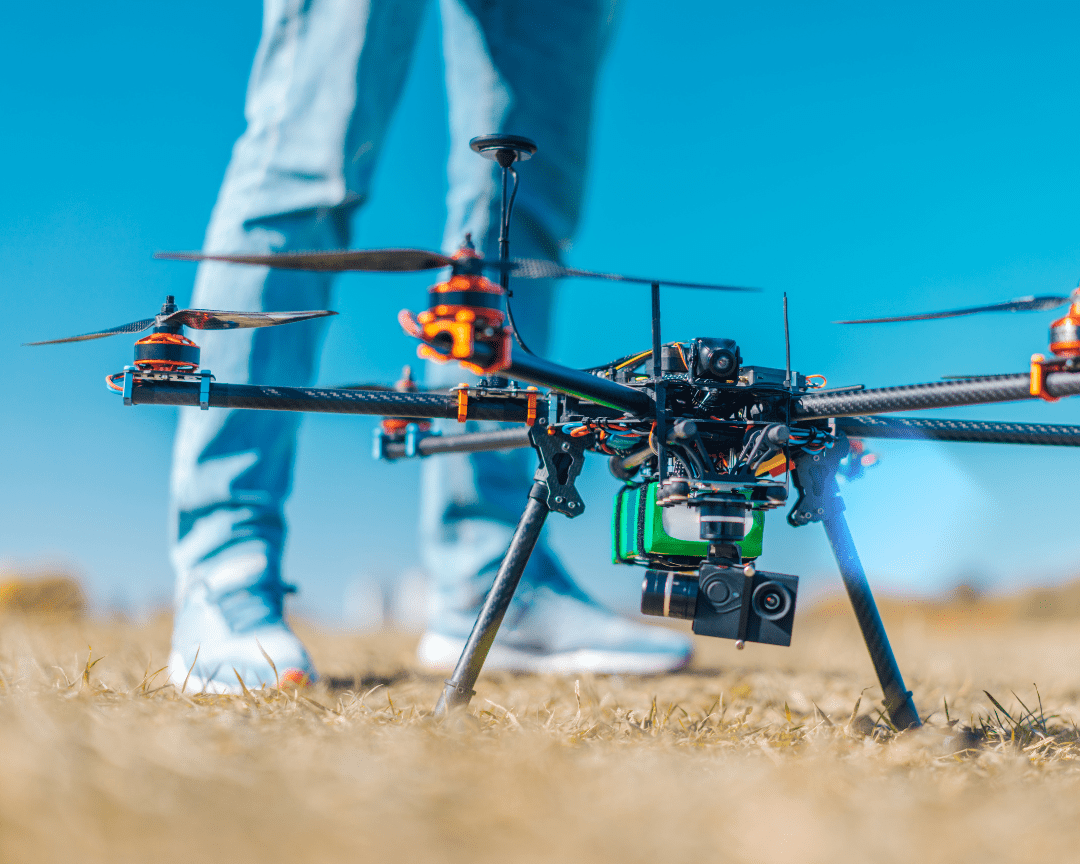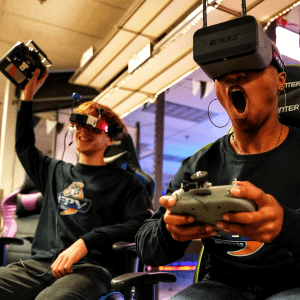One of the many uses for commercial drones today includes aerial surveillance. Drones are a more affordable, discreet, and often safer option than manned aircraft for security missions, making them ideal tools for gathering and delivering sensitive information.
Although drones are opening the job market, there’s still work to be done before drones become an everyday surveillance tool.
Keep reading to learn about drones and surveillance.
What Are Surveillance Drones Capable Of?
Surveillance drones are unmanned aerial vehicles (UAVs) that are used to record live video and image feed for the purpose of close supervision. They’re categorized as a type of unmanned aerial system (UAS) and can gather important data without needing to use human-operated controls.
Drone surveillance is used across industrial, commercial, and residential monitoring. More advanced surveillance drones are capable of geofencing and automated flight, able to instantly fly themselves to a designated location for a closer look. Object tracking, face ID, and property mapping are common features of surveillance drones.
A new world of opportunity opens up with security drones. Responsibilities with these types of drones are high, which means there are also risks associated with their growing prevalence. Whether it be in school security or the armed forces, drones are quickly becoming capable of the unimaginable.
Use Cases of Surveillance Drones
From secret military missions to private property response, security drones soar in a variety of use cases:
- Civil surveillance
- Commercial security
- Land management
- Criminal justice
- Military defense
- Agricultural security
Let’s look at some of the rapidly-growing parts of society where drones and surveillance are bridging security gaps.
Drone Security: Surveillance of Large Properties
Theme parks, government agencies, sports arenas, acreages, and other large properties benefit from drone surveillance. Never before has there been an efficient, affordable way to spot potential threats at large gatherings.
While it’s illegal in most cases to fly drones over large crowds, authorized organizations (such as the NFL and the Department of Homeland Security) utilize security UAVs daily to ensure civilian safety from potential threats.
Home Surveillance Drones
Home surveillance drones are growing in popularity. More home security companies are even selling drone kits that combine stationary cameras and drone cameras to detect suspicious activity.
Drones are capable of 24/7 on-demand home monitoring, night vision, motion detection, and more. Some drone companies offer automatic storage and charging units (such as the Beehive) where the drone is programmed to return for a charge before running out of battery.
Government Surveillance Drones
Drones used by the FBI, Border Patrol, and the DEA help government initiatives spot and manage invasions. Since drones can be used to surveil land, marine, and air operations, the government’s use of drones in the U.S. and other nations continues to grow.
Security drones can zoom in and observe interactions up-close while keeping a safe distance. They can detect cell tower interference when necessary, and block or monitor phone calls/texts involved in illegal smuggling schemes. If a drone identifies suspicious activity on the ground, it sends exact locations so authorities can swiftly run to the scene.
Law Enforcement Surveillance Drones
In many places, everyday law enforcement is permitted to use drones for critical tasks. From large fixed-wing drones to multi-rotor micro surveillance drones, law enforcement uses UAVs to scan the largest areas, like beaches, to the tiniest details, such as lip-reading of a suspect. Live-feed video drones allow police to safely “follow” suspects before approaching the scene directly.
Surveillance drones can use infrared cameras, heat sensors, radar, and other mapping tools to gather the data necessary to document crime scenes. Defense surveillance drones can be used to monitor unsafe areas or entryways.
Military Surveillance Drones
Drones for security surveillance improve military strategies around the world. With the ability to fly discreetly compared to manned airplanes or helicopters, drones aid covert attack and defense operations.
Government surveillance drones can:
- Deliver the exact status of a given target
- Be used in war zones without risking lives
- Gather accurate geographic and thermal data
- Quickly identify incoming threats
- Achieve perfect takeoff and landing
Many military-grade drones can carry non-lethal weapons (such as pellets and tasers), preparing military surveillance drones to repel or immobilize suspects without taking any lives. There are Air Force quantum drones in development, which would allow high-stakes information across large distances to be shared without risk of enemy interception.
Aerial Surveillance: Privacy and Legal Considerations
There are some concerns when it comes to drone surveillance companies and a lack of legislation as it currently stands. While commercial drone use is legal as long as the UAV is licensed and registered with the FAA, laws are developing to safely regulate surveillance drones. Some people might misuse the features of security drones to invade people’s privacy, which could pose more risk than protection in some cases.
As far as criminals benefiting from surveillance drones— like accessing private party information or using drones to smuggle illegal substances— federal counter-drone technology is already in place. Radar can detect and cancel threatening drone activity to combat data breaches, hackers, and other threats.
Drone Surveillance and Security in the Workforce
With so much new technology in the workforce today, drones are a valuable addition to many surveillance and security operations around the world. The global market for surveillance drones is expected to grow from $142 million (2022) to $476 million by 2028.
Will we be able to fill this demand for drone operation? As the world becomes more advanced in its quest to balance security and privacy, drone education is vital now more than ever. The future police force, military strategists, government workers, and drone pilots of tomorrow are the kids in schools today.
Using Drones For Good
When some people think of drones, they think of predatory flying robots. But the potential of using drones for good far exceeds the possible threats, especially with adequate drone education on a societal level.
At Drone Legends, we’re on a mission to make drone learning accessible to students with the hope of encouraging a brighter and more secure future. To become part of the community of drone enthusiasts striving to use drones for positive impact, check out our resources and join the Drone Legends conversation.




